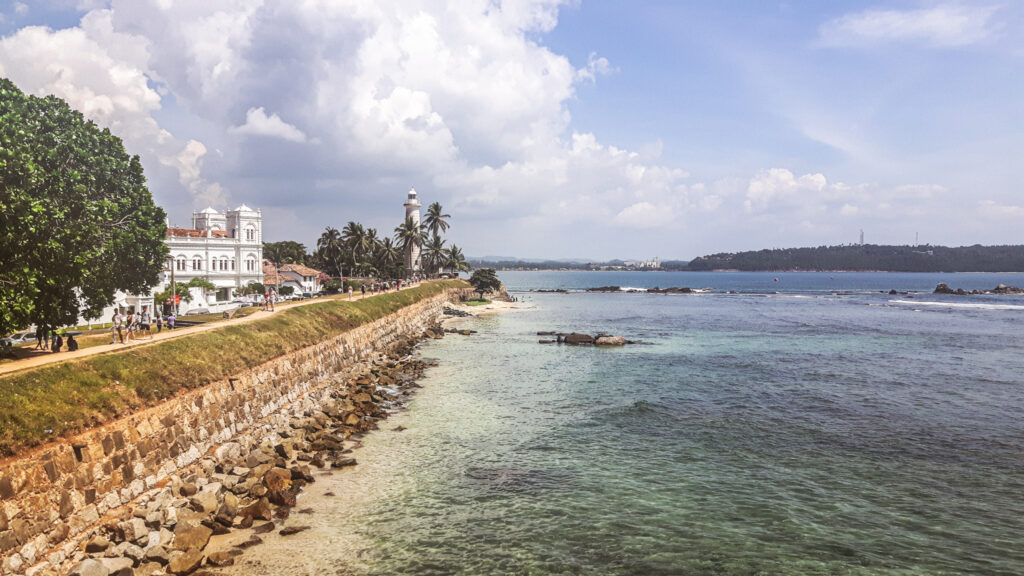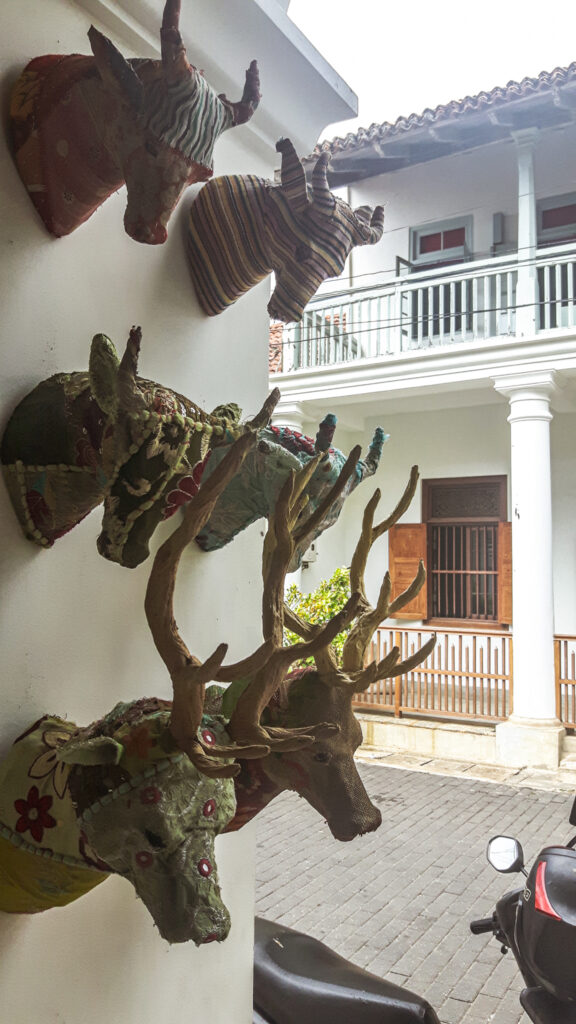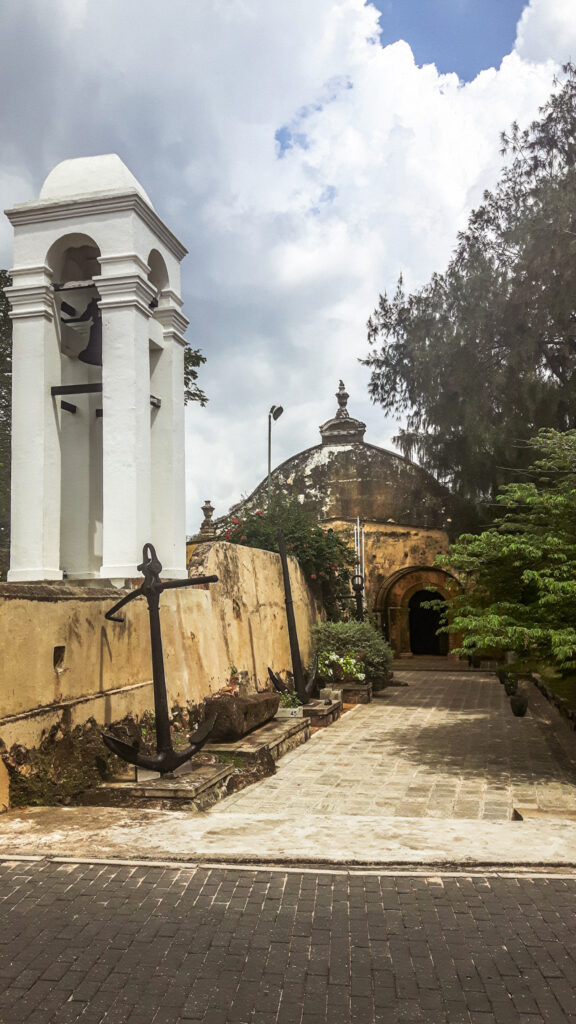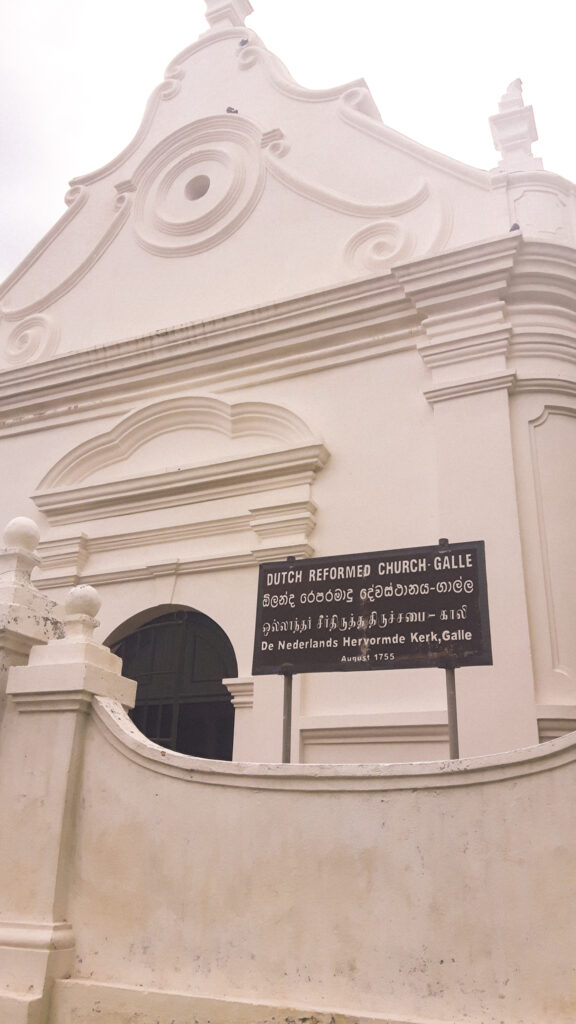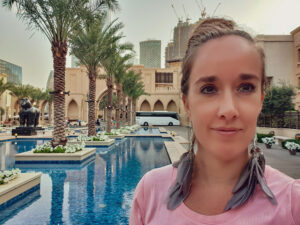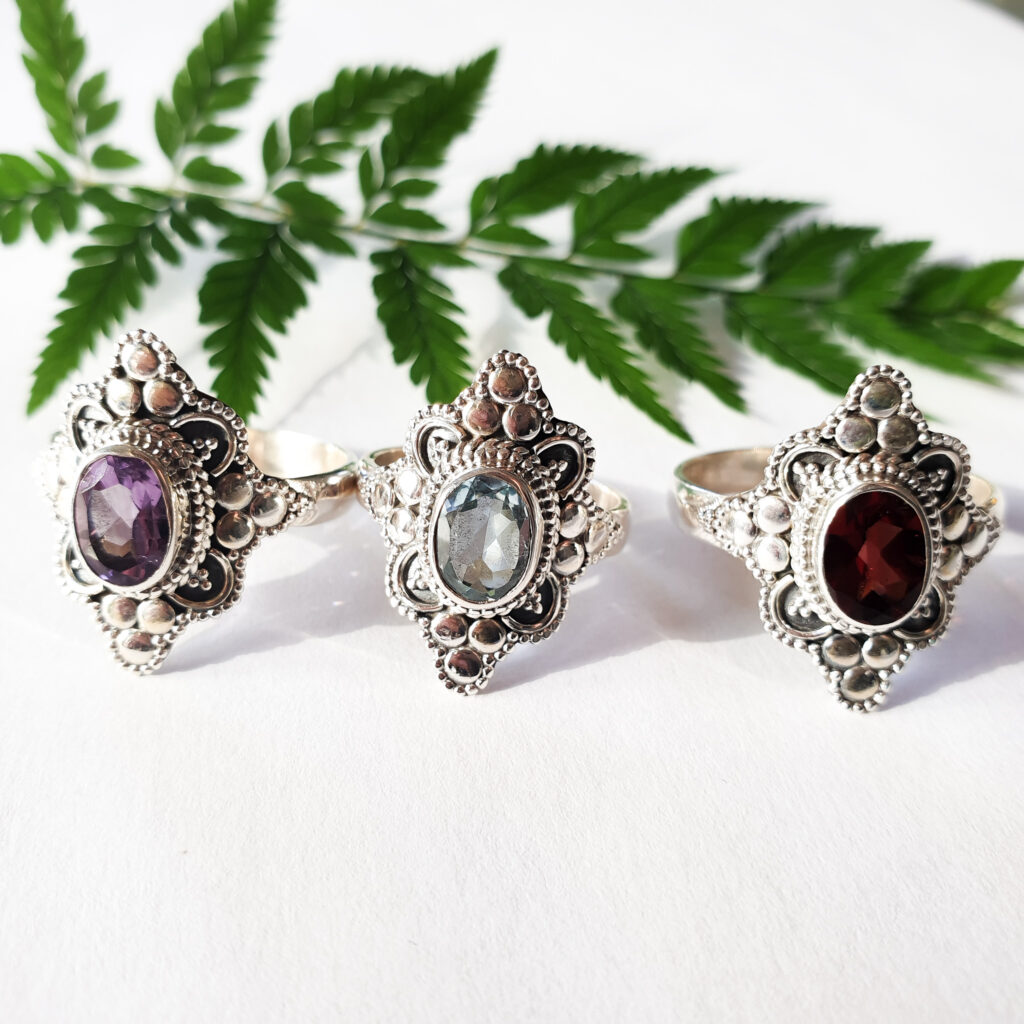Galle Fort is situated on the southwest coast of Sri Lanka. Galle Fort is built by the Portuguese in 1588. In the 17th century Galle Fort was fortified by the Dutch and today it’s a well-preserved and important historical, architectural and archaeological monument in Sri Lanka. Over the years reconstruction work was performed by the Archaeological Department of Sri Lanka. Read the article and discover the monumental highlights at Galle Fort in Sri Lanka.

Table of Contents
A short history
The natural harbour of Galle was already known in ancient times. It is said the biblical Tarsis from the time of King Salomo was located here. Galle was the most important harbour of Sri Lanka until they created the artificial harbour in Colombo. To the present day ships from all over the globe arrive in Galle for the Sri Lankan tea.
Many residents in Galle are Muslims and descendants of Arab immigrants from the 10th to the 14th century. In 1505 the Portuguese discovered Galle by accident when a fleet on its way to the Maldives was driven by headwind to the south-coast of Ceylon. It was not until 1587 when the Portuguese took over Galle. Like the Portuguese, the Dutch VOC (Dutch East India Company) was interested in Galle for economical, strategical and maritime reasons. In 1640 the Dutch owned Galle and the city became the headquarters of the Dutch administration in Ceylon. In 1656 the Dutch conquered Colombo when the city served as new headquarter. Galle was an important intermediate port for the Dutch fleet on their journey to Batavia (Indonesia).
Galle Fort is listed as UNESCO World Heritage Site since 1987. The cultural heritage is an example of European architecture and south-Asian traditions starting from the 16th century to the 19th century. Galle Fort is also known as the Dutch Fort. The area is around 53 hectares. After the tsunami of 2004 many buildings were damaged. The Ministry of Cultural Affairs started renovating and reconstructing Galle Fort. They did so keeping an eye on the original architecture. Read more below about the monumental highlights to visit at Galle Fort.
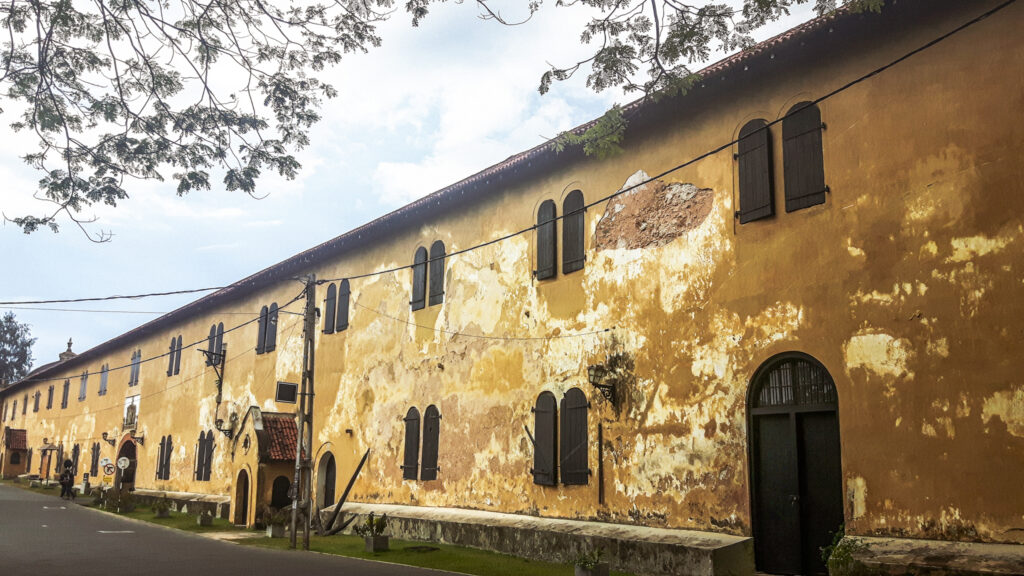
Galle Lighthouse
A popular picture taken by tourists is Galle Lighthouse. It was constructed in the 19th century by the British and is located southwest of the Utrecht bastion. The original lighthouse is destroyed by a fire and the current one is reconstructed in 1939. Galle Lighthouse is listed as UNESCO World Heritage.
The Buddhist Temple
There is one Buddhist temple in Galle Fort, Sri Sudharmalaya. The temple is built in 1889 and shows features of the Dutch-European architectural style. The temple is an UNESCO World Heritage site and a monumental highlight at Galle Fort you should visit. A statue of the sitting Buddha faces the sea over the Clippenberg Bastion. The temple has a prayer hall and a small stupa. Galle Fort is a lovely example of a multi-faith community; a Buddhist temple, a mosque and a church are located at Galle Fort.
Meera Mosque
One of the monumental highlights at Galle Fort is The Meera Masjid. The mosque is located across Galle Lighthouse. The façade looks more like a Portuguese church than a mosque. The iconic white mosque is an architectural mix of baroque, British Victorian and Islamic details. Visit the mosque and admire the interior tile work, chandeliers, wooden elements and the stained glass windows. When visiting the mosque dress appropriate.
Dutch Reformed Church
The Dutch Reformed Church is located in the centre of Galle Fort. The church is built in 1754 and it was a gift to the city of Galle from commander Casparus de Jong and his wife, as a thank you for the birth of their daughter. The church is plastered white and the architectural style is baroque. The interior of the church is very sober, according to Calvinist tradition. The old baptismal books of the church were transferred to the archives of the Wolvendaalkerk in Colombo. Tourists tore out entire pages of the book to take with them as a souvenir. The 18th century tombstones in the floor are mostly from the Dutch cemetery. The cemetery was located on Queens street until 1853. Take a good look at the tombstones, in the 18th century only a few lived to be fifty years or older.
National Maritime Museum
The National Maritime Museum is located on Queens Street, not far from the Dutch Reformed Church. The building is constructed in 1669. It used to be the cinnamon warehouse of the Dutch VOC. The museum has a collection of objects related to the maritime history of Sri Lanka. They display objects such as flags, bottles, vases and other objects found in shipwrecks. One of them was the shipwreck of the Avondster (Evening Star). The ship ran aground due to the captain’s negligence off the coast of Galle.
The Old Gate
The Old Gate is situated next the Maritime Museum and used as main gate to the Old Harbour in the Dutch era. On the inside of the gate you can still see the coat of arms of the Dutch VOC surrounded by two lions with the year 1669. The British commander removed the Dutch coat of arms on the outside of the gate. He applied the English coat of arms on the outside of the gate with the year 1796.

Old Dutch Hospital
The Old Dutch Hospital is built during the Dutch colonial time in Sri Lanka. The monumental building is now a shopping and dining area including a courtyard. The two story hospital is built with long verandas and columns. The architectural style is an excellent example of the 17th century Dutch colonial architecture. The structure is designed to keep out the humidity and heat.
Clock Tower
Another popular landmark at Galle Fort is the Galle Clock Tower. It is located at the Moon Bastion and on the same spot as the old guard room. The tower is built to honour Dr Anthonisz and a gift from one his patients.
All Saints Anglican Church
The All Saints’ Church is built in a Victorian gothic revival architectural style. The church does not date back to the Dutch colonial time because it is built in the 19th century. Nevertheless it’s a building worth visiting because of the unique architectural style.
National Museum
The National Museum of Galle is located in the oldest remaining Dutch building in Galle Fort. The old building served as billiards room for the hotel next door, now the Amangalla Hotel. The museum displays objects from the Portuguese, Dutch and English time periods such as masks, pipes, pottery, swords, knives, oil lamps, images of the Buddha and more.
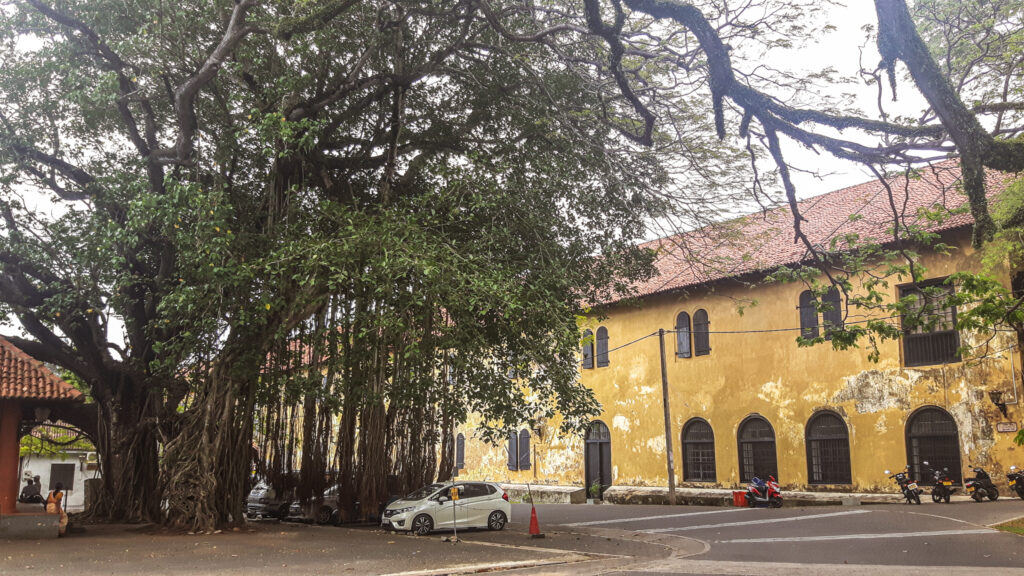
In the world’s jungle – Travel blog
Interested in visiting Sri Lanka? Read more about the places to visit, festivals, practical travel info, and best time to visit in the Beginners travel guide of Sri Lanka. Or learn more about the history of the last royal city of Sri Lanka: Kandy.
At In the world’s jungle we have a separate category for cultural travel. Here you can find articles about the Islamic culture in Indonesia, Hinduism in India or learn more about Buddhism in Thailand.
In the world’s jungle – Personal Travel Guide
Interested to know more about In the world’s jungle and the articles you can find here? Read more at the about page or get to know Adriana. I can help you planning your trip, find unique places to stay, set-up an itinerary and make other necessary arrangements. Feel free to contact me and let me know how I can help you. Check the service page to learn more.
